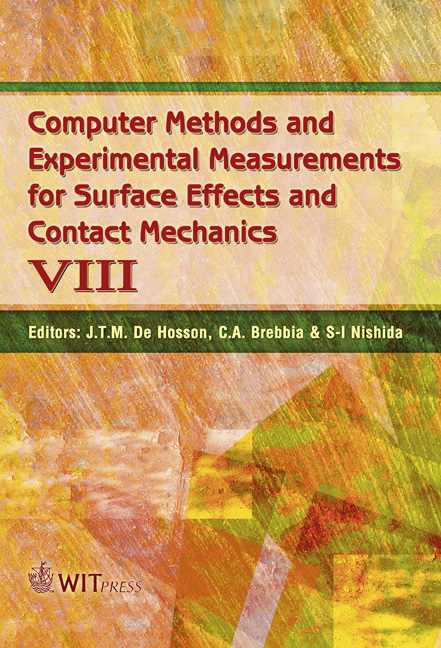Microstructural And Tribological Observations In Metallic Glass Forming Alloy Layers Produced By High-power Lasers
Price
Free (open access)
Transaction
Volume
55
Pages
10
Published
2007
Size
3,421 kb
Paper DOI
10.2495/SECM070041
Copyright
WIT Press
Author(s)
D. T. A. Matthews, V. Ocelík & J. Th. M. De Hosson
Abstract
Layers of Cu-based metallic glass forming compositions have been produced using high-power lasers. Laser surface remelting and laser cladding techniques provide sufficient cooling rates to form amorphous individual laser tracks and even coatings. The layers have been characterised by SEM, TEM, confocal and optical microscopy which have shown the layers may be fully amorphous, or (nano)crystalline. Hardness testing reveals that high hardness values are attainable for the layers (> 700 HV). Shear banding is found to be initiated during indentation testing. The processing of laser remelted layers developed from initial cladding has been analyzed and parameters are outlined which govern layer thickness, track width and ultimately the microstructural appearance of the layers. Keywords: laser cladding, amorphous, hardness, friction. 1 Introduction The formation of surface layers exhibiting differing mechanical properties to their substrate is now a well documented engineering sphere. Advanced coatings are continually being proposed and explored, which also require new processing routes, such as laser cladding, which is still in its relative infancy, particularly with respect to industrial applications on a large scale. Amorphous, amorphous matrix or nanocomposite coatings are one particularly interesting breed of surface modifications since they have been found to exhibit both extreme hardness and toughness [1]. Their application has somewhat been limited to thin, deposited, layers however, which often means that coating adhesion is limited.
Keywords
laser cladding, amorphous, hardness, friction.





